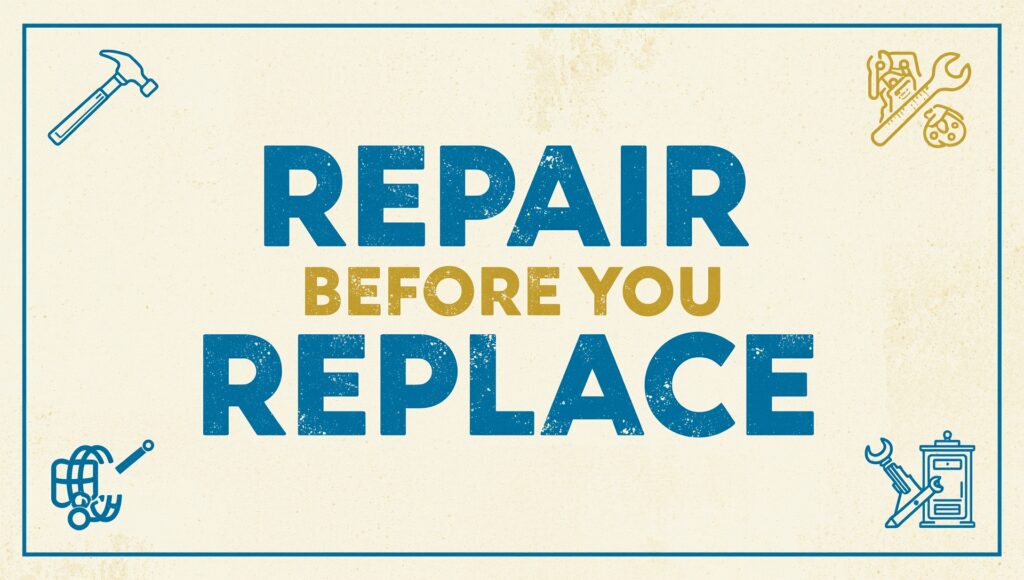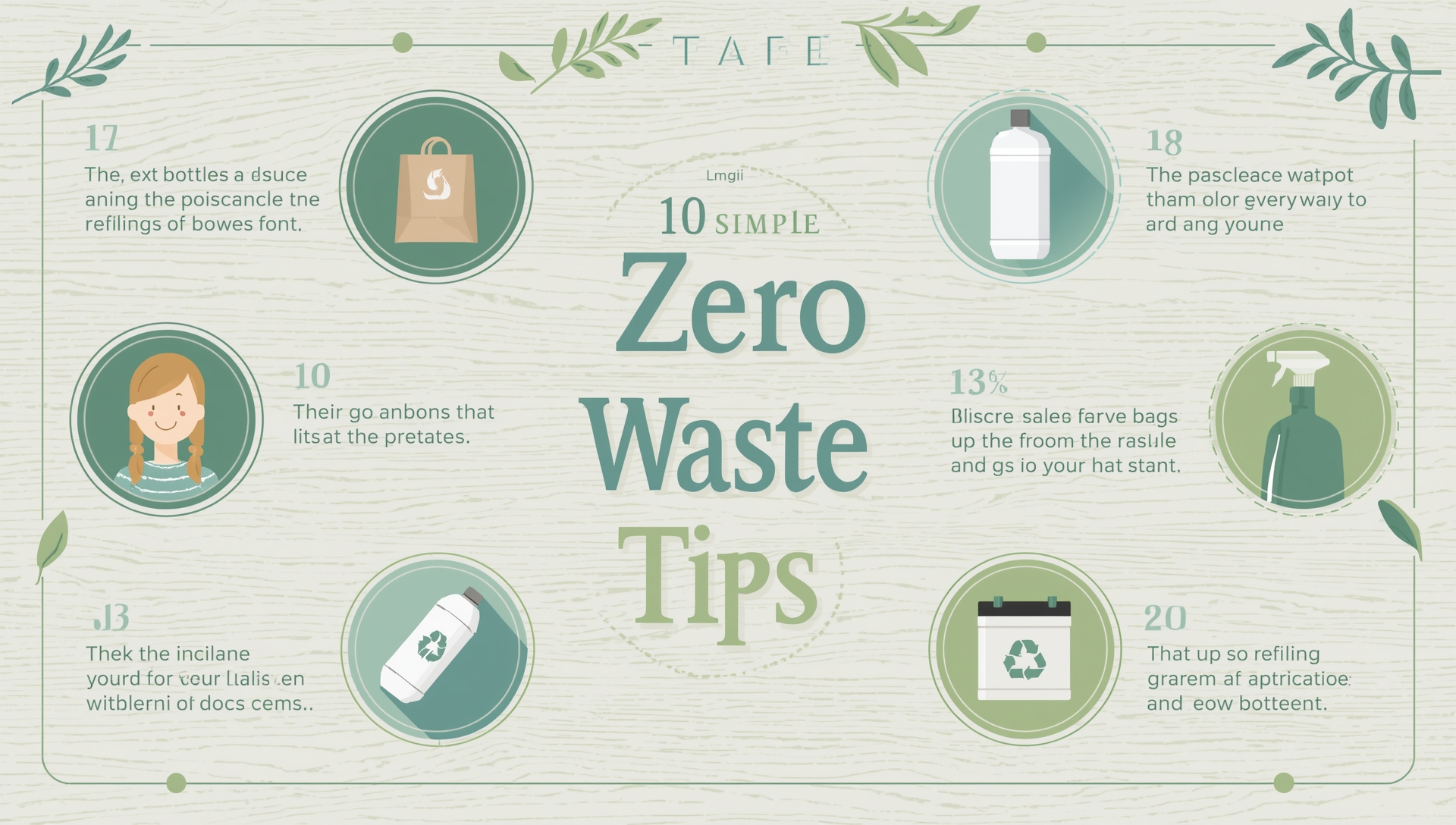The zero waste movement has captured the attention of millions worldwide, and for good reason. This sustainable lifestyle approach focuses on reducing the amount of waste we send to landfills by rethinking how we consume, reuse, and dispose of everyday items. At its core, zero waste living isn’t about achieving perfection—it’s about making conscious choices that collectively create a significant positive impact.

Every year, the average American generates over 4.5 pounds of waste daily, much of which ends up in overflowing landfills or polluting our oceans. By adopting a zero waste lifestyle, you’re not only reducing your environmental footprint but also simplifying your daily routines, saving money, and often discovering higher-quality alternatives to disposable products.
The beauty of zero waste living lies in its accessibility. You don’t need to overhaul your entire lifestyle overnight or invest in expensive eco-friendly products. Instead, small, intentional changes to your daily habits can create a ripple effect that transforms how you interact with the world around you.
Ready to begin your zero waste journey? These 10 simple zero waste tips will help you reduce plastic waste, embrace sustainable living practices, and create a more mindful approach to consumption—all while fitting seamlessly into your existing routine.
Carry a Reusable Water Bottle
Americans purchase approximately 50 billion plastic water bottles each year, with less than 30% being recycled. The environmental cost is staggering: these bottles can take up to 1,000 years to decompose, and their production requires significant fossil fuel resources.
Switching to a reusable water bottle is one of the easiest zero waste home ideas you can implement immediately. A single reusable bottle can replace hundreds of single-use bottles throughout its lifetime, dramatically reducing your plastic waste footprint.
When choosing your reusable bottle, consider these factors: stainless steel options maintain temperature and resist bacteria buildup, glass bottles don’t retain flavors but require careful handling, and BPA-free plastic versions offer lightweight portability. Look for bottles with wide mouths for easy cleaning and consider size based on your daily hydration needs.
To make the habit stick, keep bottles in strategic locations—your car, office desk, and gym bag. Many coffee shops and restaurants now offer free water refills, and numerous apps can help you locate water fountains in your area.
Bring Your Own Shopping Bags
Plastic bags represent one of the most visible forms of environmental pollution. A single plastic bag can take 10-20 years to decompose, and many end up harming marine wildlife or clogging waterways. The solution is remarkably simple: bring your own reusable shopping bags.
Reusable bags come in various materials, each with distinct advantages. Cotton canvas bags are durable and washable but can be bulky. Mesh produce bags allow cashiers to see contents easily and work perfectly for fruits and vegetables. Compact nylon bags fold into tiny pouches, making them ideal for unexpected shopping trips.
The key to success with reusable bags is developing systems that ensure you actually have them when needed. Keep a set in your car, hang bags by your front door, or choose compact versions that fit in purses or backpacks. Some shoppers find success by immediately returning bags to their car after unpacking groceries.
Many stores now offer small discounts for bringing your own bags, turning this eco-friendly habit into a money-saving practice as well.
Zero Waste International Alliance – Definitions and Principles
Buy in Bulk
Bulk shopping benefits extend far beyond environmental impact, though the waste reduction is significant. Purchasing items like grains, nuts, spices, and cleaning supplies from bulk bins eliminates layers of individual packaging while often providing cost savings.
Successful bulk shopping requires some preparation. Invest in a variety of containers—glass jars work well for pantry items, while cloth bags are perfect for dry goods. Many stores allow you to weigh containers first (called “tare weight”) so you’re only charged for the product itself.
Start your bulk buying journey with non-perishable staples you use regularly: rice, oats, pasta, beans, and spices. Many natural food stores and co-ops offer extensive bulk sections, and some conventional grocery stores are expanding their bulk offerings.
Be mindful of quantity when buying in bulk. Purchase amounts you’ll realistically use before items spoil, and ensure you have proper storage containers to maintain freshness. Some bulk items, like nuts and oils, can go rancid if stored too long.
Switch to Bar Soaps and Shampoos

The average household uses dozens of plastic bottles annually for body wash, shampoo, conditioner, and hand soap. These containers rarely get recycled properly and contribute significantly to bathroom waste streams.
Bar soaps and shampoo bars offer effective alternatives that eliminate plastic packaging entirely. Modern formulations address common concerns about traditional bar soaps—many are now pH-balanced, moisturizing, and available in formulations for different hair and skin types.
Shampoo bars can take some adjustment as your hair adapts to different cleansing agents. Start by using them once or twice weekly while gradually increasing frequency. Some people experience a transition period where hair feels different, but this typically resolves within a few weeks.
Store bar products properly to maximize their lifespan. Use soap dishes that allow drainage, or hang bars in shower caddies that promote air circulation. Well-maintained bars often last longer than their liquid counterparts, providing additional cost savings.
Compost Food Scraps
Food waste accounts for approximately 22% of municipal solid waste, and when organic matter decomposes in landfills without oxygen, it produces methane—a greenhouse gas significantly more potent than carbon dioxide. Composting at home transforms this waste into nutrient-rich soil amendment while reducing your household’s environmental impact.
Home composting systems range from simple backyard piles to sophisticated tumbler systems and indoor worm bins. The basic recipe remains consistent: combine carbon-rich “brown” materials (dry leaves, paper, cardboard) with nitrogen-rich “green” materials (fruit and vegetable scraps, coffee grounds).
Compostable materials include fruit and vegetable scraps, eggshells, coffee grounds and filters, tea bags (check for synthetic materials), yard trimmings, and plain paper products. Avoid meat, dairy, oils, pet waste, and diseased plants, which can create odors or attract pests.
Even apartment dwellers can participate through vermicomposting (worm composting) systems that fit under kitchen sinks or on balconies. Many communities also offer food scrap collection programs or shared composting facilities.
Pack Lunches in Reusable Containers
The convenience of disposable lunch packaging comes with significant environmental costs. Paper bags, plastic wrap, aluminum foil, and single-use containers create substantial daily waste streams, especially for families with school-age children.
Reusable containers offer practical solutions that often improve food storage and presentation. Glass containers don’t retain odors or stains and can transition from refrigerator to microwave safely. Stainless steel options resist dents and provide excellent temperature retention. Silicone containers fold for compact storage and offer flexibility for various food shapes.
Successful lunch packing requires some strategic planning. Prepare containers the night before, batch-cook proteins and grains for easy assembly, and invest in various sizes for different food types. Bento-style boxes with multiple compartments work well for varied meals and eliminate the need for separate containers.
Include reusable utensils, napkins, and water bottles to create completely waste-free lunch systems. Many reusable products pay for themselves within months through reduced spending on disposable alternatives.
Say No to Single-Use Items
Single-use items permeate daily life in ways that often go unnoticed until you consciously look for them. Plastic straws, disposable utensils, paper napkins, and takeout containers create mountains of waste for mere minutes of convenience.
Developing awareness is the first step toward reducing single-use consumption. Carry reusable alternatives—a compact utensil set, metal or silicone straws, and cloth napkins take minimal space while covering most situations. Many restaurants accommodate requests to skip disposable items when you’re dining in.
For takeout situations, some establishments allow customers to bring their own containers, though this practice varies by location and health regulations. When disposable items are unavoidable, choose compostable options when available, or save sturdy plastic containers for reuse at home.
The key is preparation and habit formation. Keep reusable alternatives in convenient locations—your car, purse, office desk—so they’re available when needed. Over time, reaching for reusable options becomes automatic.
Opt for Digital Receipts
Paper receipts generate approximately 686,000 tons of waste annually in the United States alone. Many receipts are printed on thermal paper containing BPA or similar chemicals, making them unsuitable for recycling and potentially harmful to handle frequently.
Digital receipts offer multiple advantages beyond waste reduction. They’re automatically organized in email folders, making expense tracking and returns much simpler. Many retailers can email receipts directly, while others use apps that store purchase information digitally.
Requesting digital receipts requires minimal effort—simply provide your email address at checkout or use retailer apps when available. For businesses where digital options aren’t available, consider whether you actually need receipts for small purchases.
Some situations still require paper receipts—business expenses, major purchases, or items with warranty implications—but the majority of daily transactions can shift to digital formats with no inconvenience.
One Tree Planted – Practical zero waste tips and community projects
Choose Products with Minimal or Compostable Packaging
Packaging choices significantly impact household waste generation. Products wrapped in multiple layers of plastic, individual portion packaging, and non-recyclable materials contribute disproportionately to waste streams compared to items with thoughtful packaging design.
Learning to identify truly compostable or recyclable packaging requires some education. Look for certifications from organizations like the Biodegradable Products Institute (BPI) for compostable materials. Understand your local recycling guidelines, as accepted materials vary significantly between communities.
Shopping strategies that reduce packaging waste include choosing larger sizes when practical, selecting products in glass or metal containers over plastic, and supporting brands that prioritize sustainable packaging. Many natural food stores and co-ops specifically curate products based on packaging sustainability.
Consider the total lifecycle when evaluating packaging choices. Sometimes slightly more packaging that ensures product protection and reduces food waste represents a better environmental choice than minimal packaging that leads to spoilage.
Repair Before You Replace

The throwaway culture that dominates modern consumption patterns creates enormous waste streams while depleting natural resources. Learning basic repair skills and prioritizing maintenance over replacement can dramatically extend product lifespans while saving significant money.
Clothing repairs often require minimal skills and materials. Basic sewing techniques can address loose buttons, small tears, and hem adjustments. Online tutorials make learning these skills accessible, and many communities offer repair cafes where experienced volunteers help with various projects.
Electronics and appliances often have longer lifespans than marketing suggests. Research common problems and solutions before assuming items need replacement. Many issues stem from dust accumulation, software glitches, or worn but replaceable parts rather than fundamental failures.
Furniture repairs can transform worn pieces into functional, attractive items. Simple techniques like tightening joints, refinishing surfaces, or reupholstering can dramatically extend furniture lifespans while creating unique, personalized pieces.
When repairs aren’t feasible, explore donation options that give items second lives rather than sending them to landfills.
Start Small, Think Big

Transitioning to a zero waste lifestyle doesn’t require perfection or complete life overhaul. The most sustainable changes happen gradually, building momentum through small successes rather than overwhelming yourself with dramatic shifts.
Choose two or three tips from this list that feel most achievable given your current circumstances and routines. Master these changes until they become automatic habits, then gradually incorporate additional zero waste practices. This approach builds confidence while creating lasting behavioral changes.
Remember that every reusable item you choose, every single-use product you decline, and every repair you attempt instead of replacing contributes to a larger movement toward sustainable living. Your individual actions inspire others and contribute to shifting cultural norms around consumption and waste.
The environmental benefits extend beyond waste reduction. Zero waste practices often lead to discovering higher-quality products, supporting local businesses, developing practical skills, and creating more mindful relationships with the items in your life.
Challenge yourself to implement three of these zero waste tips this week. Start with the changes that feel most natural and build from there. Your future self—and the planet—will thank you for taking these important first steps toward sustainable living.






5 Responses
Panic-mode cleaning rescue, crisis averted beautifully. Emergency cleaning perfected. Last-minute legends.
Wow, superb blog layout! How long have you been blogging for? you made blogging look easy. The overall look of your site is wonderful, as well as the content!
thank you 🤝
I got good info from your blog
I consider something truly special in this website .